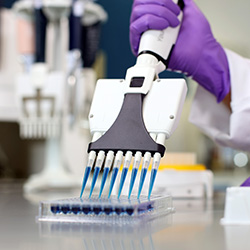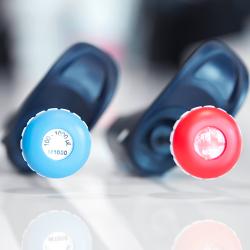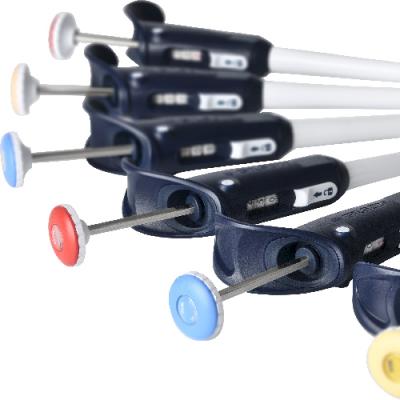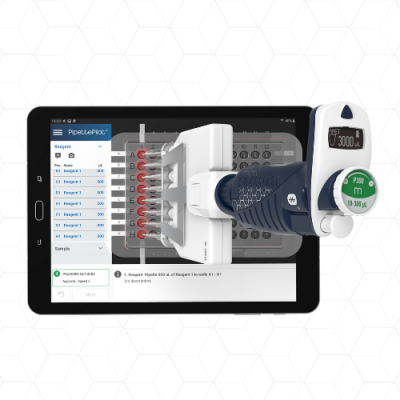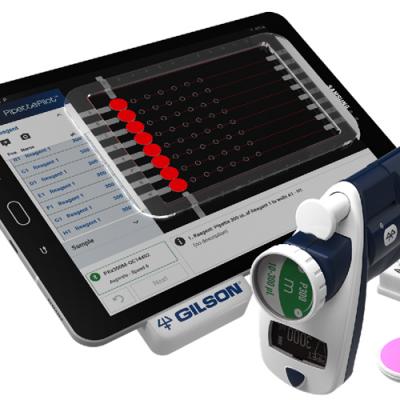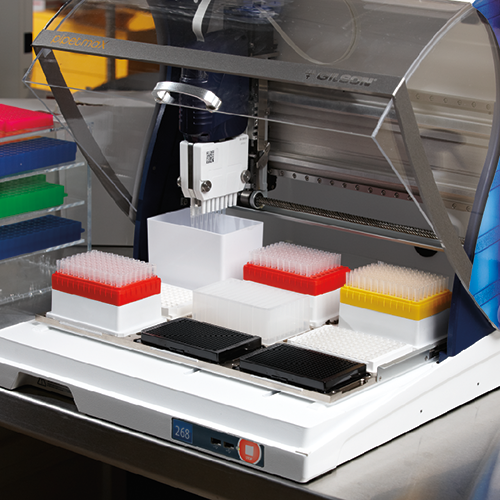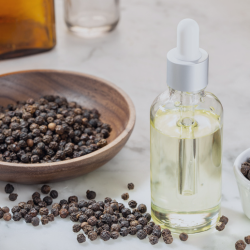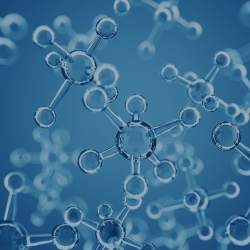Sample integrity — that is, ensuring sample reliability and quality — is vital for trustworthy science. Without sample integrity, researchers are susceptible to variable or unreliable results and will lack confidence in their conclusions. Subsequently, labs may need to perform experimental re-runs, which is time-consuming and expensive. And for clinical and diagnostic applications,altered or contaminated samples could lead to erroneous results such as false positive or false negative — with potentially dire consequences.
While sample integrity can be affected throughout the entire workflow, you can take measures to maintain it. The risks of contamination can influence sample integrity, as well as many other factors such as temperature and light exposure.
In this article, we focus on how to improve liquid handling reliability — a critical component of most workflows. In particular, ensuring proper pipetting technique, pipette storage, environmental factors, storage, and transport, all of which play a significant role in ensuring reliable liquid handling. For many of these considerations, the right tools and equipment are key.
Improved Technique Means More Reliable Results
One of the most significant factors that affect sample integrity during liquid handling is howthe liquid is handled: the pipetting technique. Having an incorrect pipetting technique most notably leads to poor reproducibility and inaccurate results. What’s more, it also risks introducing contamination, either biological or chemical, further destroying sample integrity.
Wrong pipetting introduces contamination in three ways — sample-to-pipette, pipette-to-sample, or carry-over (sample-to-sample). However, improving your pipetting techniques increases reliability and accuracy, while also reducing the risk of contamination.
Part of improving your pipetting is making sure you use the right tool for the job. This involves choosing the right pipette for the sample type, but also choosing the right pipette tip, too. Once armed with the right equipment, you should then focus on improving your technique. Several influencing parameters affect pipetting accuracy, all of which can be easily corrected (Table 1).
Leaky/poorly sealed pipette tips may affect accuracy by 0.5% to 50% |
Use original or recommended pipette tips |
Reuse of pipette tips may affect accuracy by up to 4% |
Only use pipette tips once |
The straightness of pipette tips may affect accuracy by up to 10% |
Use appropriate tips only |
The difference in vapor pressure of the liquid to be pipetted versusthat of the water used for adjustment may affect accuracy by up to 2% |
Sufficiently pre-wet pipette tips |
Failure to wipe the pipette tip on the vessel wall can affect accuracy by up to 3% |
Wipe the pipette tip on the vessel wall (wiping distance 8 to 10 mm)* |
Pipette tip immersion depth and handling angle during pipetting may affect accuracy by up to 1% |
Hold the pipette in a vertical position while aspirating |
Irregular rhythm and timing during pipetting can affect accuracy by up to 1.5% |
Apply a consistent pipetting technique |
A leaky piston system can affect accuracy by 1% to 50% |
Regularly check the pipette and the volume aspirated |
Uneven piston movement can affect accuracy by up to 0.5% |
Ensure smooth piston operation |
Information extracted from ISO 8655-2 – Annex B
*Gilson recommends touching the tip to the vessel wall at an angle of 10° to 45°
Table 1: Parameters and corrective measures for accurate pipetting.
Beyond the pipetting technique, how you organize yourself and your workstation can also improve sample integrity. Optimizing these aspects reduces injury and lowers fatigue, and therefore reduces the risk of errors. Four key elements need to be considered: position, posture, equipment, and work organization.
- Position: Keep your torso and neck aligned, do not twist or rotate your wrist while pipetting, and hold your pipette with a relaxed grip
- Posture: Sit, rather than stand, and make sure to sit close to your work at the bench
- Equipment: Use low-profile tubes, solution containers, and waste receptacles. You can also use an electronic, motorized pipette to reduce injury and improve reproducibility
- Work organization: Organize your bench so you can comfortably reach frequently used objects, and take a break every 20 minutes from repetitive tasks
Vertical Pipette Storage Reduces Contamination and Damage
It’s not all about the pipetting itself — how you store your pipette also affects sample integrity during liquid handling. Leaving your pipette on the pipette bench poses a risk in multiple ways:
- Benchtop contamination: Resting your pipette tip on the bench means it can get contaminated if the work surface is not fully clean
- Internal contamination: Lying your pipette horizontally (on the bench or elsewhere) risks liquids entering and contaminating/corroding the pipette parts
Using a pipette holder minimizes the risk of contamination, as it holds your pipette vertically. Many pipette holders exist, depending on lab needs: single pipette holders (which can be stored on a wall for labs with limited space) carousels for multiple pipettes, and multichannel stands are all available.
For electronic pipettes, you can avoid contamination by choosing a stand that charges them while storing them — avoiding the need to lie them horizontally while charging. However, if your lab uses both electronic and mechanical pipettes, you can get a small adapter that allows you to charge electronic pipettes on your standard carousel stand.
Protect Your Samples with the Right Temperature, Humidity, and Storage
Did you know environmental factors during liquid handling can also affect sample integrity? Temperature, humidity, and storage conditions all play a crucial role:
Temperature
Crucially, the wrong temperature can ruin sample integrity by disrupting reactions — such as killing enzyme activity during PCR. But it affects liquid handling too. Density changes with temperature, so if lab temperatures aren’t consistent then you will not pipette consistent volumes of liquid.
Humidity
A lower humidity leads to a higher evaporation rate. As such, labs that are dry have increased chances of liquid handling error and a higher chance of contamination due to increased aerosols.
Storage
If samples aren’t properly stored, they can be exposed to contaminants in air, fridges, and sampling tools. You should therefore store your sample in a compatible inert container at the appropriate temperature.
Transport is Pivotal in Preserving Sample Integrity
Both before and after the experiment, how you handle and transport your samples and various liquids is important. Liquid handling includes how a sample is transported, both within the laboratory and between different sites, and this can affect its integrity:
Vessels
Similar tosample storage above, samples must be carefully packed for transport, or they risk contamination. To avoid compromising integrity, samples must be in properly sealed vessels, with no cracks and away from airborne contaminants. You should place all samples in individual plastic bags and put these in a larger container with an absorbent to reduce contamination risk. The larger containers should be Styrofoam boxes or insulating vacuum flasks where appropriate.
Physical factors
Some samples must be stored at low temperatures or risk decomposing. Keep samples intact by maintaining the temperature using portable fridges or ice packs where necessary. Additionally, some samples are highly sensitive and can have their integrity compromised by agitation or exposure to daylight. You should therefore protect your sample by taking appropriate precautions and making sure these are communicated to couriers or personnel through labelling.
Finally, it is critical to minimize sample turnaround time. To maintain sample integrity, try and get your sample to its intended location as soon as possible — but without compromising other considerations such as agitation.
Labeling
Sample labeling is a key requirement for proper identification, andis required by SOPs and good sample handling practices. For sample reliability and integrity, make sure to label all samples appropriately. This should include using labels that remain intact and legible in different temperatures and upon water exposure.
Trust Your Results with Reliable Liquid Handling
For high results confidence, you must trust the integrity of your samples. To improve the accuracy and trustworthiness of your results, it is vital to understand the role that liquid handling plays, and to ensure that you handle liquids reliably and consistently.
Pipetting technique, pipette storage, environment, sample storage, and transport all play critical roles in maintaining sample integrity and minimizing the risks of contamination. By carefully controlling these aspects and optimizing your processes — especially by using the right tools and equipment — you can ensure minimal errors and improved accuracy, and consequently deliver results you can trust.
Maximizing Your Sample Integrity with the Right Pipetting Tools and Techniques
Sample contamination is one of the biggest worries when it comes to sample integrity. It can occur at many stages of a laboratory’s operations, from sample collection, to transport, analysis, and storage. In this article, we explore the key drivers of contamination during pipetting, showing how the right tools and pipetting best practices help maximize sample integrity for consistent success.
Read More

















